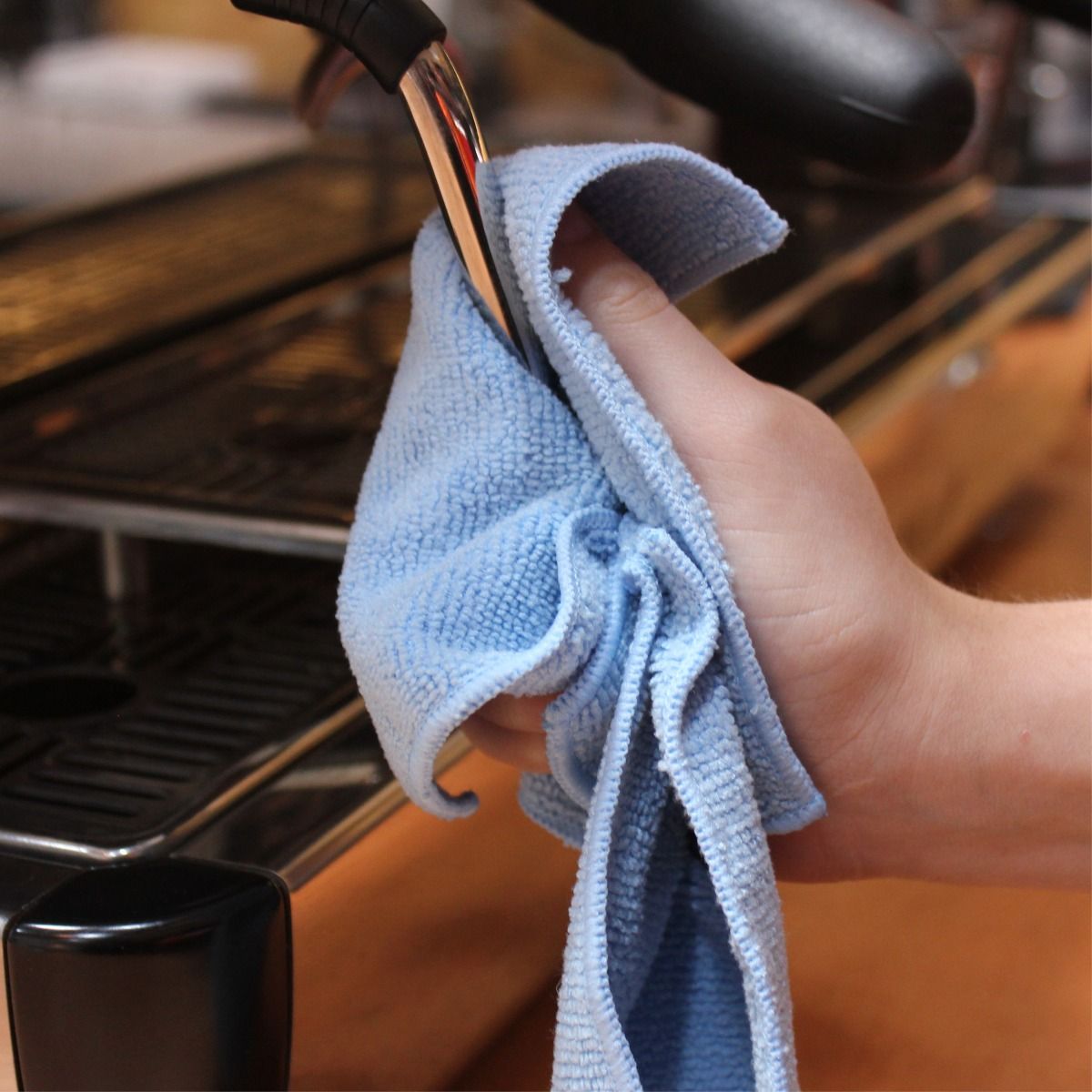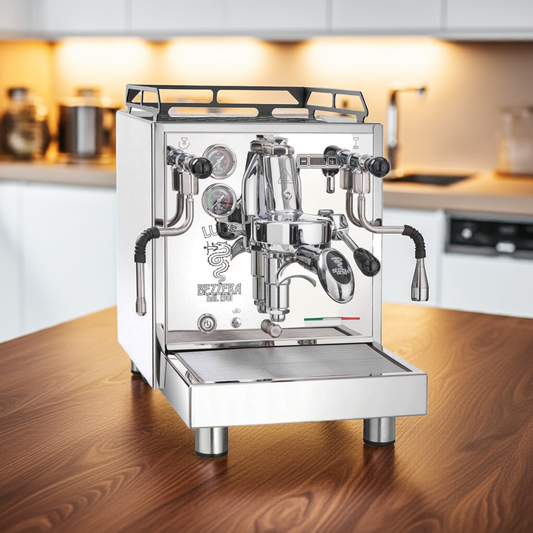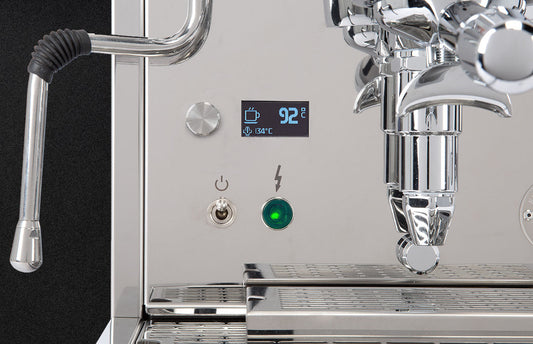With a portafilter , you can not only prepare excellent espresso, but also fine, creamy milk foam – exactly as required for a traditional cappuccino .
The frothing process itself isn't complicated, but it does require some practice . It's especially important to understand the two phases of frothing :
1. Drawing phase – bringing air into the milk
At the beginning of the brewing phase, the tip of the steam wand is completely submerged in the milk. This prevents large bubbles from forming when you turn on the steam.
Once the steam is fully turned on , slowly lower the milk jug so that the steam nozzle gradually approaches the surface. The perfect point is when you hear a faint hissing sound .
💡 Tip:
If it bubbles , the nozzle is too high!
The brewing phase is complete as soon as the milk jug becomes lukewarm .

2. Rolling phase – for creamy, homogeneous milk foam
During the rolling phase, the previously produced foam is evenly distributed .
This creates a fine, creamy foam that blends perfectly with the espresso.
To do this, immerse the steam nozzle a little deeper into the milk. A vortex should now form, drawing the fine bubbles downward.
As soon as the pot becomes so hot that it is uncomfortable to touch , turn off the steam immediately .
Then clean the nozzle with a damp cloth and finally give a short burst of steam to clear the openings.
Summary
-
Pulling phase: Incorporate air – a slight hiss is the sign that you are on the right track.
-
Rolling phase: Swirl the milk to make the foam creamy and even.
-
Cleanliness: Clean the steam wand immediately after frothing to avoid milk residue.
With a little practice, you will soon be able to conjure up perfect milk foam – the ideal base for cappuccino, latte macchiato, etc.




